Microsoft Surface Pro 6 FAQ: What's new, black finish, accessories, and more
If you have questions about the Surface Pro 6 we have answers in our new handy guide that gets right to the point.
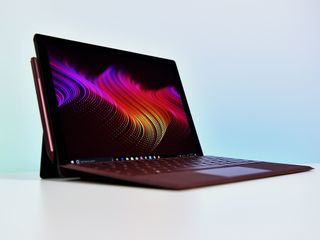
The new Surface Pro 6 is now available in select markets with more market availability expected in the coming months. Our full review goes into all the changes and performance of the new premium 2-in-1, but for those who want a TL;DR of what's new and what you need to know, we compiled this list of frequently asked questions (FAQ).
How did Microsoft create the Surface Pro 6 black finish? Is there an option for LTE? And does the Core i5 version have a fan? You'll find the answers to those questions and more below.

New Surface Pro 6 with 8th Gen Intel Core CPUs.
The latest Surface Pro 6 now comes with quad-core 8th Gen Intel Core i5 or i7 CPU, improved thermals, and a new black color option.
What's new with Surface Pro 6?
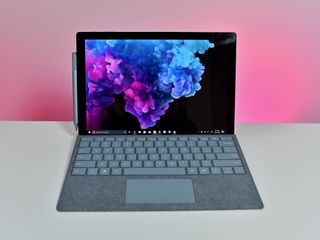
The new Surface Pro 6 only has a few changes, but they are significant.
- New Intel 8th Gen processors – Jumping from dual-core to quad-core is a big deal for performance, and with nearly double the multi-core executions the new Surface Pro 6 is substantially faster (more than 67 percent faster, according to Microsoft) than last year's model. That's thanks to the Intel Core i5-8250U and Core i7-8650U processors now being used. Matching that is a new thermal solution to keep the heat at bay without running fans too loudly.
- Back in black - If you're new to the Surface Pro, you may not know that the original Surface Pro (2012) and Surface Pro 2 (2013) were available only in black. Microsoft shifted to "Surface grey" for Surface Pro 3, but now, a new all-black model is back for Surface Pro 6. Everything is blacked-out on the new Surface Pro 6, and while it may look slimmer, it's just an illusion.
Nothing else has changed from the fifth-generation Surface Pro (2017) for the display, keyboard, ports, kickstand or chassis, but the instant-on feature and SSD for storage are notably improved.
Why is the name "Surface Pro 6" instead of just "Surface Pro 2018"?
In 2017, Microsoft made some convincing arguments why that Surface Pro was not called "Surface Pro 5". It has to do with the grand concept that the Surface Pro had arrived in its final form and that the version from 2017 was the culmination of what the Surface team had sought to achieve from day one.
Sure, there would be modest improvements to Surface Pro from here on out, but the core design and execution was there. Plus, the no numbering thing seems to work for Apple, which refers to its MacBook and iPad line without such designations.
Fast-forward to 2018 and all of that is gone as we're back to Surface Pro 6. So, what gives?
Get the Windows Central Newsletter
All the latest news, reviews, and guides for Windows and Xbox diehards.
Despite the new Surface Pro 6's minor upgrades, the answer is practical: consumers and awareness. People just find it easier to seek out the new Surface Pro when it has a corresponding version number. As a Microsoft spokesperson told us:
We strive to give customers the best experience possible and want to ensure they are informed when choosing the right Surface to meet their needs. We've gone back to the numeric naming system to help customers easily identify the latest device.
People like numbers.
What version of Windows 10 ships with Surface Pro 6?
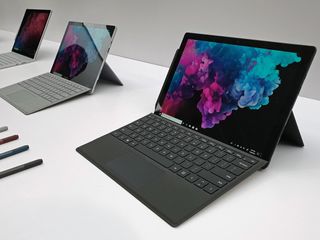
Microsoft is shipping Windows 10 Home with the Surface Pro (Version 1803, build 17134.228), a notable change from the past where Windows 10 Pro was used. On a Surface Pro 6 with 256GB of storage there is 211GB available out the box.
The change shaves $100 off for the Pro license (OS license fees are included with the PC purchase), which can then be used to boost the entry-level Surface Pro's hardware. For example, Microsoft dropped the $799 Core m3 processor and 4GB option from last year and instead offers a much better quad-core Core i5 with 8GB of RAM for just $100 more at $899.
Not to fear, though, for businesses and education purchases Microsoft is selling the Surface Pro 6 with a Pro license, presumably at a higher cost.
If you want Windows 10 Pro you can purchase a license through the Microsoft Store and upgrade the device instantly.
If you don't know the difference between Windows 10 Home and Pro we have a detailed guide explaining the features.
Is the Surface Pro 6 fanless?

The Core i5-8250U version of Surface Pro 6 is completely fanless.
The Core i7 model, due to more generated heat, still has a fan.
Is there a Core m3 version of Surface Pro 6?
No. The starting the model is a quad-core Core i5 with 8GB of RAM and 128GB of storage for $899. Any retailer listing a Surface Pro 6 with Core 3 is incorrect as that series was not refreshed by Intel for the 8th generation of processors.
Will there be a Surface Pro 6 with LTE?

Microsoft has not yet committed to a Surface Pro 6 with 4G LTE.
However, seeing as the Core i5 version of Surface Pro 6 is fanless, the space where the fan would be could be used for an LTE modem in the future – at least, that is how it worked with Surface Pro (fifth generation), which still has an option for 4G LTE.
For now, however, if you want a Surface Pro with LTE you will have to settle for the fifth-generation model.
See Surface Pro (2017) with LTE
Is the black Surface Type Cover Alcantara?
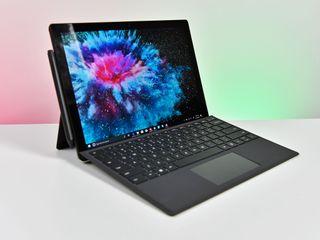
No. The black Surface Type Cover is smooth, soft, and cloth-like, but it is like the older Surface Type Covers and not the fancier Alcantara Surface Pro Signature ones.
Everything you need to know about the Alcantara fabric on Surface PCs
The tradeoff is the black Surface Type Cover is just $129 versus the $159 for the Signature Alcantara versions, which come in burgundy, platinum, or cobalt blue. You can also still get the all-black Surface Pro Type Cover with Fingerprint ID if you want to double up on security.
Why is there no Iris Plus option for the i7 model?
Intel did not make an Iris Plus Graphics 640 chip for its 8th Gen of 15W processors, so Microsoft could not offer it for the Surface Pro 6 i7 model like last year.
Interestingly, it appears to matter very little. Benchmarks reveal that a Core i5 Surface Pro 6 with Intel UHD Graphics 620 can substantially beat last year's Core i7 Surface Pro (2017) with Iris Plus Graphics 640 in graphics performance.
Do the accessories for Surface Pro (2017) all fit Surface Pro 6?
Yes. As there are no changes to the exterior of Surface Pro 6 compared to last year all cases, adapters, accessories, skins, and more all work without issue.
Can you scratch the black Surface Pro 6?

Theoretically, yes, but it is likely difficult. Here is Microsoft's comment on the process it used to make the Surface Pro 6 black:
Surface Pro 6 is not anodized. We designed a thin, tough ceramic oxide layer that is grown directly on the magnesium metal enclosure. On top of this tough ceramic oxide layer, we apply multiple layers of black finish to achieve the desired hand feel and durability."
Because the ceramic oxide layer is combined with multiple layers of black finish the all-black Surface Pro 6 chassis is technically thicker, but we are talking microns (1 micron =0.001 millimeters), so it's tough to notice:
The black enclosure is custom designed for this color with dimensions modified at the micron level for the best durability of the ceramic layer and the black finish.
A non-technical version of that is the kickstand (moving part) won't grind against the Surface Pro 6's body because the added black finish altered the thickness at the micron level.
Does the Surface Connect to USB-C Adapter work with Surface Pro 6?
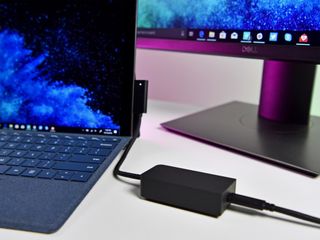
Yes. You can use the Surface Connect to USB-C Adapter with Surface Pro 6 (and Surface Laptop 2) with an external power source, a Type-C external display, or for Type-C acccessories like thumbdrives.
Read more about the Surface Connect to USB-C Adapter hands-on review for more information.

New Surface Pro 6 with 8th Gen Intel Core CPUs.
The latest Surface Pro 6 now comes with quad-core 8th Gen Intel Core i5 or i7 CPU, improved thermals, and a new black color option.

Daniel Rubino is the Editor-in-chief of Windows Central. He is also the head reviewer, podcast co-host, and analyst. He has been covering Microsoft since 2007, when this site was called WMExperts (and later Windows Phone Central). His interests include Windows, laptops, next-gen computing, and watches. He has been reviewing laptops since 2015 and is particularly fond of 2-in-1 convertibles, ARM processors, new form factors, and thin-and-light PCs. Before all this tech stuff, he worked on a Ph.D. in linguistics, watched people sleep (for medical purposes!), and ran the projectors at movie theaters because it was fun.
